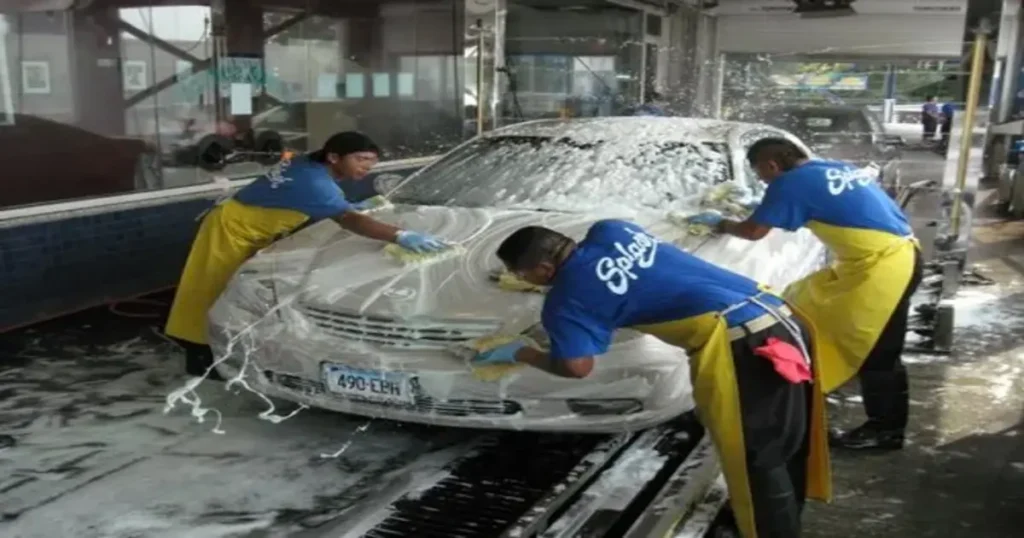Introduction Car maintenance and spare parts are crucial for ensuring your vehicle’s longevity and performance, but for beginners, navigating this world can be daunting. Understanding the basics, from routine tasks like oil changes and tire rotations to recognizing the importance of quality spare parts, is the first step towards becoming a confident car owner. This guide aims to demystify car maintenance and spare parts, equipping you with the knowledge and skills needed to keep your vehicle in top shape, save on repair costs, and enjoy a smoother driving experience. From essential components like brakes and filters to the importance of regular servicing, we’ll delve into everything you need to know to keep your car running smoothly and safely. Whether you’re looking to save money on repairs or simply want to understand your vehicle better, let’s embark on this journey through the essentials of car maintenance and spare parts. Introduction to Basic Car Parts Engine Components The engine is the powerhouse of a vehicle, converting fuel into mechanical energy to propel the vehicle forward. It consists of several key components: Transmission and Drivetrain The transmission and drivetrain work together to transmit power from the engine to the wheels, enabling the vehicle to move efficiently: Suspension and Steering These systems contribute to vehicle stability, control, and comfort: Routine Maintenance Checks Oil Change Intervals and Types of Oil Oil Change Intervals Regular oil changes are crucial for maintaining engine health and longevity. The frequency of oil changes depends on factors like the vehicle’s age, mileage, and driving conditions. Typically, it’s recommended to change the oil every 5,000 to 7,500 miles (or every 6 months to 1 year for older vehicles or severe driving conditions). Types of Oil There are different types of motor oil: Choosing the right oil viscosity (thickness) is also important, as recommended in your vehicle’s owner’s manual based on climate conditions. Checking and Replacing Air Filters Air Filter Inspection Air filters prevent dirt, debris, and contaminants from entering the engine, ensuring clean airflow for combustion. Check your air filter regularly (every 12,000 to 15,000 miles or annually) for signs of clogging or dirt accumulation. Replacing Air Filters If the air filter is dirty or clogged, replace it promptly. This simple maintenance task improves engine efficiency, fuel economy, and overall performance. Monitoring Tire Pressure and Tread Wear Tire Pressure Proper tire inflation ensures safety, improves fuel efficiency, and extends tire life. Use a tire pressure gauge to check pressure levels at least once a month and before long trips. Refer to your vehicle’s manual or the sticker inside the driver’s door for recommended tire pressure. Tire Tread Wear Inspect tire tread regularly for signs of wear. Use a tread depth gauge or the penny test (inserting a penny into the tread with Lincoln’s head facing down; if you can see the top of Lincoln’s head, it’s time to replace the tire). Uneven wear may indicate alignment or suspension issues. Signs of Common Problems Recognizing Brake Wear and Noise Brake Wear: Symptoms of Engine Issues Overheating: Strange Noises: Understanding Dashboard Warning Lights Check Engine Light: ABS Light: Oil Pressure Light: Battery Light: Importance of Regular Servicing Regular servicing is critical for maintaining the health and performance of your vehicle over time. It involves scheduled maintenance tasks and professional inspections that help identify and address potential issues before they escalate into costly repairs or safety hazards. Scheduled Maintenance Checklist Oil Changes: Fluid Checks and Replacements: Battery Maintenance: Safety Tips and Precautions Handling Hazardous Materials (e.g., Engine Fluids) Engine Fluids: Disposal: Using Jacks and Stands Safely Choosing Equipment: Safety Procedures: Maintenance: Electrical Precautions When Working with Car Components Battery Safety: Handling Electrical Components: Fuse Checking: General Electrical Safety: Conclusion Maintaining your vehicle involves understanding its key components, performing routine checks, and promptly addressing issues. Whether tackling DIY tasks or seeking professional help, regular maintenance ensures safety, reliability, and longevity. By staying proactive and informed, you can enjoy a smoother driving experience and avoid costly repairs down the road.


